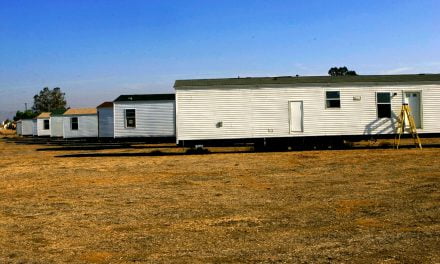California’s teacher shortage continues to worsen, and one major culprit is lack of affordable housing.
Three-quarters of California school districts are experiencing a lack of qualified teachers available to fill openings. This shortage is due to insufficient numbers of new replacement teachers in the pipeline to replace retiring teachers. Further, in high-cost areas, current and potential teachers are simply unable to afford to live where they work. 29% of school districts experiencing teacher shortages cite high costs of living as a major reason, according to a study by the Learning Policy Institute.
For example, just 1% of teachers in San Francisco and 2% of teachers in San Jose can afford to buy a home in the area, according to a Trulia analysis. As a result, the teacher shortage worsens.
A 2018 bill, AB 224, proposes to work with California school districts to provide affordable housing for teachers and other school district employees. In this case, affordable housing means housing for which low- and moderate-income households are qualified to pay.
The bill allows developers and school districts to borrow from the California Housing Finance Agency to build affordable teacher housing. They will not need to begin paying back the loan until tenants move in and begin making rental payments.
This move follows California’s Teacher Housing Act of 2016, which exempted school district housing receiving state funding from the law preventing tenant discrimination based on profession. [Calif. Health & Safety Code §§53570 et seq.]
Failing California’s most essential residents
Critics of Sacramento’s efforts to provide more affordable rental housing specifically for teachers say it takes resources from other low-income households. After all, the housing shortage isn’t limited to teachers. It impacts workers in the health services, retail, emergency services and restaurant industries, among others.
Related article:
California service workers, public employees can’t afford to buy in most metros
Further, the 2016 law and the 2018 bill open the door for more teacher housing, but they don’t ensure it. That’s because they don’t address zoning restrictions that limit dense development in desirable areas where housing costs are highest. Finding developable land is tough for school districts, and using their own land is often met with local opposition who say school district land ought to be devoted solely to schools, according to Mercury News.
As a result of these many obstacles, very few new teacher developments are likely to result from the 2016 law and this bill, even if it is passed. In fact, just 1% of California school districts plan to use some sort of housing incentives to attract teachers to their district, according to the Learning Policy Institute study.
To truly address the problem, California needs to tackle the lack of low- and moderate-income housing head-on.
Some steps are being taken to add to the affordable housing stock at the statewide level, but local efforts need to be pursued, too. These steps will ideally take the form of loosening zoning restrictions to allow for more low- and moderate-income housing in desirable areas. Only then will multi-family construction increase, and rents and prices will cool off and fall closer in line with local incomes.














